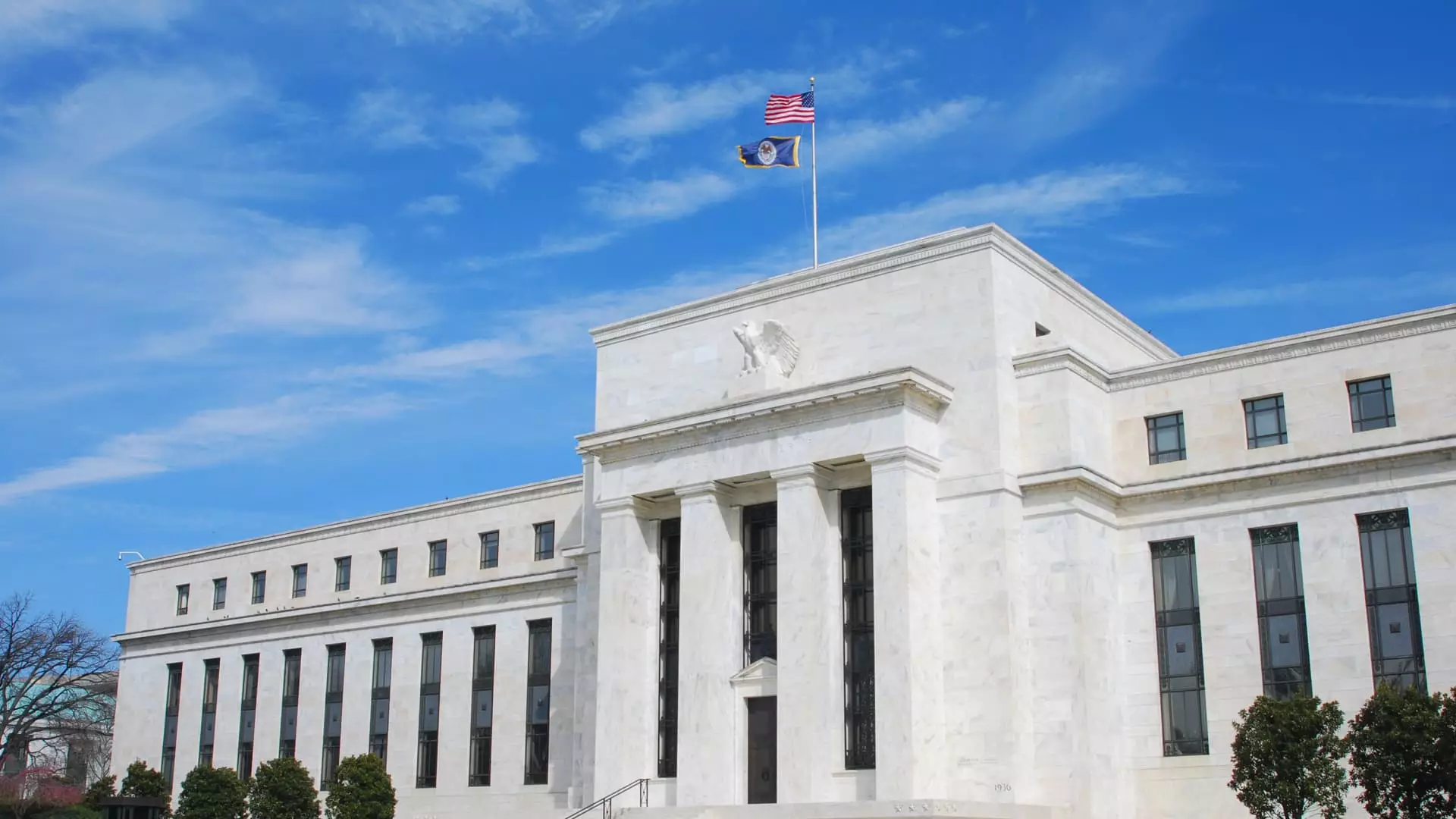In the shifting landscape of American finance, the anticipation surrounding the Federal Reserve’s interest rate decisions has reached a fever pitch. As the Fed prepares to keep interest rates stable, one can only hope this pause is genuinely strategic and not a retreat into complacency. The recent decline in inflation presents a glimmer of hope, but the dark cloud of an escalating trade war looms ominously on the horizon, threatening to push consumer prices upward across all fronts. This precarious balancing act, highlighted by experts like Andrzej Skiba from RBC Global Asset Management, cautions us that inflationary pressures could soon manifest, restricting the Fed’s ability to implement rate cuts.
The complexity of this situation raises critical questions about whether the Fed is adequately prepared for a potential economic storm. Have we truly learned from past financial missteps, or are we poised for another bout of hardship as tariffs begin to bite?
The Ripple Effects of Federal Funds Rates
The Federal funds rate, which governs what banks charge each other for overnight lending, extends its influence far beyond Wall Street; it permeates every facet of consumer finance. When this rate remains stagnant, the implications for borrowing and savings rates across the board are profound. Greg McBride, the Chief Financial Analyst at Bankrate.com, paints a vivid picture of stress among consumers who are struggling to keep their financial heads above water.
As households grapple with mounting debt and rising prices, the prospect of reduced borrowing costs could provide a much-needed lifeline. However, the reality is that relief is tempered. While record-high interest rates on loans and credit cards have dipped slightly, they are still significantly elevated compared to recent historical data. So, can we really afford to celebrate minor declines in borrowing costs when the financial pinch remains as tight as ever?
The Double-Edged Sword of Consumer Debt
Examination of consumer borrowing costs reveals a troubling trend—revolving credit card debt is on the rise, up by 8.2% year-over-year. This statistic underscores a crucial aspect of our economy—a consumer class stretched to the limit, perpetually on the brink of financial instability. Nonrevolving debts, which include auto loans and student loans, are also increasing, albeit at a slower rate of 3%.
As auto loan rates inch down from previous highs, potential car buyers face a paradox: escalating prices amid the uncertainty wrought by tariff threats. It’s baffling to consider how trade policy could serve as yet another layer of burden for consumers already laden with high-interest debts. In this quagmire, potential car buyers are not just facing high rates; they’re also contending with the specter of increased vehicle prices born of imposed tariffs. This begs the question: how much more can the average American consumer bear before a tipping point is reached?
The Student Loan Dilemma
Higher education, often touted as a pathway to opportunity, comes with its own set of burdens. The Fed’s steady hand will not shield students from impending financial pressures, especially with federal student loan interest rates now rising to 6.53%. The current administration’s approach to educational loans is raising alarms. With financial burdens on the rise, it appears that students will have to navigate an increasingly treacherous economic landscape to achieve their academic aspirations.
Moreover, private student loans remain vulnerable to shifting rates, amplifying the stakes for borrowers whose futures depend on them. In an era where the cost of education continuously spirals upward, the need for a reassessment of our educational payment structures has never been more urgent. As a society, are we not morally obligated to ensure that young people can pursue education without drowning in an ocean of debt?
Saving Amidst Uncertainty
On a slightly brighter note, the landscape of savings accounts offers some relief. Top-yielding online savings accounts currently present the most attractive returns in over a decade, averaging around 4.4%. This fact serves as a small beacon of hope amidst the financial fog. It’s essential to highlight that, while the Fed holds rates steady, consumers can still find avenues for financial betterment with strategic saving.
But does a high-interest savings account mitigate the broader economic risks? Despite the allure of these accounts, the burden of debt continues to overshadow potential gains. As consumers seek refuge in savings, we must ask whether these rates will remain resilient when the markets eventually take a turn for the worse. The financial ecosystem remains vulnerable, and a moment of introspection is warranted for consumers and policymakers alike.

Leave a Reply